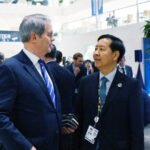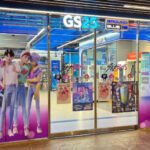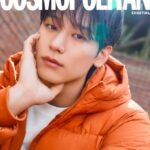The Samsung Battery Box 1.5, Samsung SDI’s ESS battery to be supplied to NextEra Energy (File photo, courtesy of Samsung SDI)
Samsung SDI Co., the world’s sixth-largest electric vehicle cell maker, is set to provide batteries for energy storage systems (ESS) to NextEra Energy Inc., a major US clean energy company, in a 1 trillion won ($726 million) deal.
The South Korean battery maker is expected to secure recovery momentum in the ESS market amid the sustained weakness in the EV sector on sluggish demand while aiming to bite into market shares of major Chinese players hurt by the US government’s policies to rein in their expansion.
Samsung SDI is in final talks with NextEra Energy to supply 6.3 gigawatt hours (GWh) of ESS batteries, about 11.5% of the total ESG capacity of 55 GWh in North America last year, industry sources in Seoul said on Thursday.
The potential supply to NextEra Energy is expected to help Samsung SDI win deals from other companies, according to the sources.
The news pushed up Samsung SDI’s stock prices by as much as 4.1% to 390,000 won, the highest since June 21 in the South Korean stock market on Friday morning as the supply would be the largest deal won by a domestic company.
Samsung SDI plans to sell the Samsung Battery Box (SBB) 1.5 model encased with high-nickel NCA, or nickel-cobalt-aluminum, cells and modules stacked on racks, according to the sources. The SBB 1.5 loads 5.26 megawatt hours (MWh) per unit, increasing the energy density by 37% from its predecessor.
SURGING DEMAND
Demand for ESS batteries is predicted to jump as countries worldwide rush to install solar power facilities, which need storage systems as their electricity generation varies depending on the weather.
Samsung SDI had led the ESS battery sector with a market share of 50% by 2018. The company failed to maintain the throne as Chinese players actively expanded their presence with cheaper and safer lithium iron phosphate (LFP) batteries.
The unit of South Korea’s largest conglomerate Samsung Group made up only 4.9% of the global ESS battery market last year, far behind the 40% of the world’s top battery maker Contemporary Amperex Technology Co. (CATL), the 11.9% of the No. 2 BYD Co. and the 11.4% of Eve Energy Co.
Those Chinese companies are likely to lose steam, especially in the US, given the intensifying trade war between the world’s two largest economies.
“The global ESS market is dominated by Chinese makers with low-cost LFP batteries, but the US plans to ramp up tariffs on Chinese products to 25% from 7.5% in 2026, which will increase demand for Korean products,” said an industry source in Seoul. “The ESS is becoming a savior of Korean battery makers dampened by sluggish EV demand.”
EXPANSION IN THE US
Samsung SDI has been targeting the US ESS market as falling solar panel prices powered a photovoltaics boom in the country. Domestic electricity consumption also increased, especially in cities where Big Tech companies are concentrated, due to the growing artificial intelligence industry.
The US ESS market was forecast to more than double to $18.7 billion by 2030 from an estimated $7.9 billion this year, according to research firm Global Market Insights Inc.
Samsung SDI is predicted to install ESS battery production lines at its planned US cell plants as it is scheduled to manufacture LFP batteries from 2026 with an aim to take on Chinese rivals in the low-cost market.
Stellantis CEO Carlos Tavares (left) and former Samsung SDI CEO Jun Young-hyun shake hands after agreeing to establish a battery joint venture on Oct. 27, 2021. The two companies plan to operate two battery plants in the US (File photo, courtesy of Samsung SDI)
LG Energy Solution Ltd., the world’s third-largest EV battery maker, is also set to expand the ESS cell business to recover earnings dampened by sluggish EV sales of its key customers such as Tesla Inc. and General Motor Co.
The South Korean company is converting some production lines for EV batteries at its plants in Michigan and Nanjing, Jiangsu, to those for ESS cells.
The move allowed LG Energy to cut costs and times, compared with establishing new ESS battery manufacturing lines, while raising runs of the existing plants.
The company was estimated to have logged an operating profit of some 20 billion won from the ESS battery business last year, swinging from a loss of 200 billion won in 2022, industry sources said.
Samsung SDI may have reported a profit of 43 billion won from the sector, according to the sources.
By Hyung-Kyu Kim and Woo-Sub Kim
khk@hankyung.com
Jongwoo Cheon edited this article.















